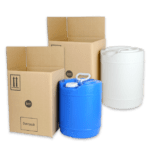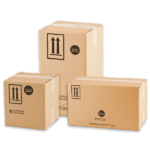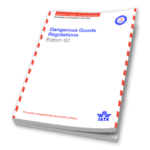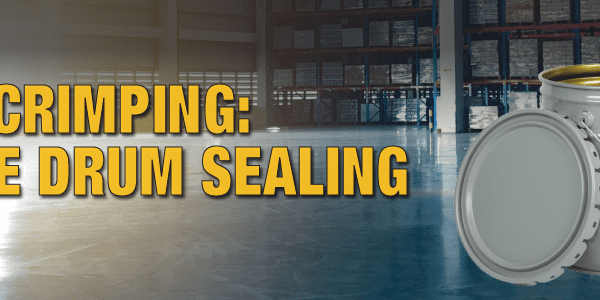This post was originally published in December 2014 and has been updated in May 2021 for accuracy.
How to Select and Use Single Packaging
“Less is more” is a concept that applies to many things, including selecting packaging for hazardous chemicals. Is dealing with complicated packaging designs with multiple components too costly and time-consuming? Do you want to “go green” by eliminating unnecessary packaging material? If you do, the minimalistic single packaging format may be for you.
What is Single Packaging?
Basically, single packaging is packaging that does not incorporate inner containers. It can be compared to the other major packaging type, the combination packaging, which has inner containers inside an outer packaging. The design of a single packaging, by contrast, consists of one single “layer” of packaging and a closure. Typical single packagings include:
- Drums
- Jerricans (rectangular drums)
- Boxes (if no inner packagings are used)
- Bags
- Barrels
For hazardous materials, single packagings must be tested according to the United Nations (UN) specifications. This involves preparing samples of the packaging design and running them through a gauntlet of tests that simulate common causes of package failures. These tests include a drop test and a stacking test, as well as others aimed at specific packagings, such as fibreboard components or wooden barrels.
Types of Single Packaging
Single packagings are divided into two types – those that will be used for solids only and those that also can be used to ship liquids. The main difference is that those suitable for liquids must pass a pressure test to show that they can safely contain liquids without leaking. Note that packagings that are approved for liquids can be used for solids as well.
The specification code assigned to the packaging will indicate the difference. Packagings intended for solids only will be given a specification code that contains a maximum gross weight, followed by the letter “S.” Packagings suitable for liquids will not include the weight or the “S”; instead, they will be coded with the maximum specific gravity (relative density) followed by the maximum hydrostatic pressure test applied to the sample packagings.
Single Packaging vs. Combination Packaging
Although single packagings may be simpler to assemble than their combination counterparts, it’s still possible to fail to seal them safely. Make sure you follow the closure instructions provided by your supplier. For example, is there a torqueing requirement for tightening the screw cap on a drum? A particular way to seal a UN specification bag? Not following such instructions can result in a spill since there are no inner packagings to act as a failsafe if the outer packaging fails.
Does this make single packagings inherently less safe than packagings that use inner containers? Not really. Single packagings should not be more likely to fail than combination packagings if they have been properly assembled since both types of packaging must pass the minimal performance testing requirements. However, you will find that in some cases (particularly when liquids are transported by air), the regulations may show a preference for combination packagings. You must always check the packing instructions for your specific product and mode of transport to see if single packagings are an option.
Finally, can you turn a single packaging into a combination packaging? Let’s say you have your substance in a 5-Liter UN specification drum, but your packaging instruction will not allow you to ship in single packagings. Simply putting the drum into a non-UN specification box will not turn it into a combination packaging. Instead, the regulations view this as an overpack because the entire design (drum plus box) has not passed the performance tests. However, there’s an easy solution! Select a UN specification “V” (Variation 2) box for your outer packaging. Since the outer box has been performance-tested and is certified for use with various inner packagings, your small single packaging will now be treated as an inner container, and the whole design will be considered a combination packaging.
Do you have questions about packaging? Contact ICC Compliance Center here at 888-977-4834 (Canada) or 888-442-9628 (U.S.), and ask for one of our Regulatory Experts. We can advise you on current and upcoming regulations.
Stay up to date and sign up for our newsletter!
We have all the products, services and training you need to ensure your staff is properly trained and informed.

|

|

|







 ICC USA
ICC USA ICC Canada
ICC Canada
Nice blog and extremely wonderful. You can do impressive much better but I still say this
perfect. Keep trying for the superlative.